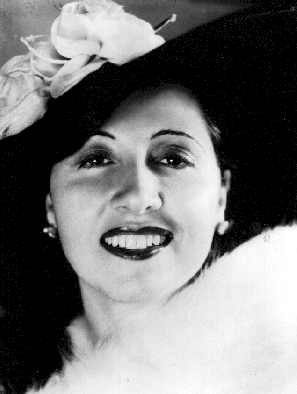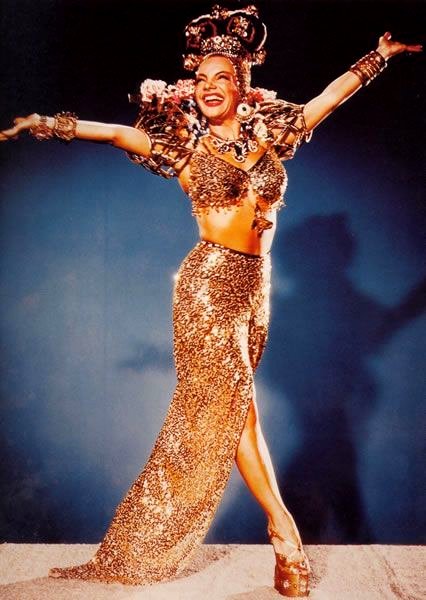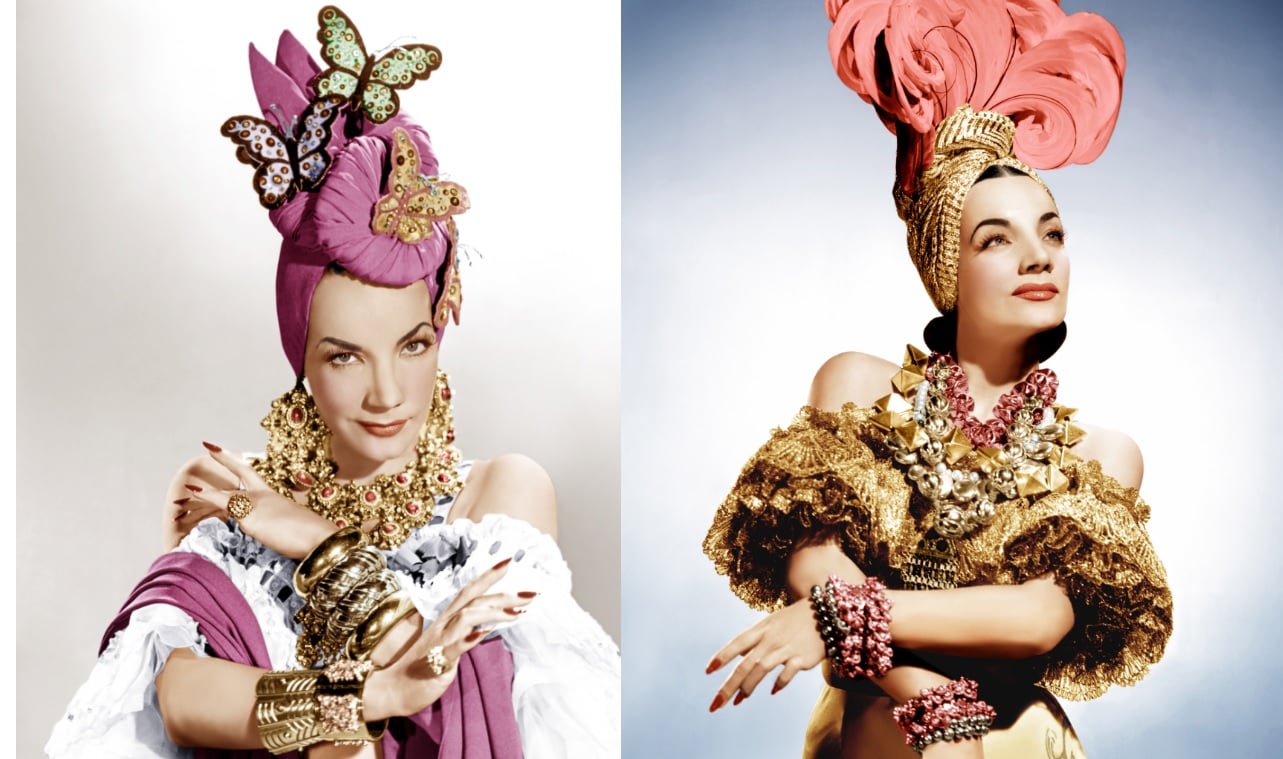A tale of two Carmens
They were both born in Portugal, arrived in Brazil as
children and found their place in Brazilian film history. They were both
christened Maria do Carmo, and both chose Carmen as their stage name. They were
both gone too soon. They are actress, producer and director Carmen Santos and
entertainer Carmen Miranda – the two Carmens from Brazilian cinema.
Maria do Carmo Santos Gonçalves was born in the small
town of Vila Flor in 1904 and arrived in Rio de Janeiro at age eight. Barely a
teenager, she stopped studying and got a job to help her family. First she was
a seamstress at a shop, and later became a saleswoman. In 1919, at age 15, she
made her first film. The truth about how she was discovered is uncertain: at
first she told the press that she was discovered while imitating Mary Pickford
at the shop she worked in. In another interview, she said she had never been to
the movies before starring in one, and made a screen test for fun. The truth is
that she got the lead role in “Urutau” (1919), a film that would be screened
only a few times by its maker, the American William Jansen. When he left
Brazil, Jansen left with all the copies of the film.
Maria do Carmo Miranda da Cunha was born in Marco de
Canaveses in 1909 and arrived in Brazil when she was only one year old. As a
teenager, she found work in a hat store. In 1926 she was an extra in her first
film, Carlo Campogalliani’s “A Esposa do Solteiro” (“The Single Man’s Wife”).
In 1929 she started singing on the radio and in 1930, after recording the hit
song “Taí”, Carmen became a superstar. She was the first person to ever sign a
contract with a radio station in Brazil and soon she became the highest-paid
professional in radio. Her transition to the movies was a natural step, and
between 1932 and 1939 she made six films, most of them appearing as herself.
Unfortunately, almost all of these films are lost.
Carmen Santos garnered a lot of press attention with
her first work. The press would make her a superstar – without a single film
with her reaching the theaters in the following decade. Her next two efforts
would be directed by Leo Merten, a filmmaker from Czechoslovakia: “A Carne”
(“The Flesh”, 1924) and “Mademoiselle Cinema” (1925). In both, besides being
the star, Carmen was also a producer, as she had founded her own production
company, Films Artístico Brasileiro, FAB. Both movies never see the light of
the day, destroyed by fires and accidents at the movie lab.
In 1939, while singing at the Casino da Urca, Carmen
Miranda called the attention of Broadway impresario Lee Shubert, who hired her
for his new revue. Carmen accepted the invitation to go to Broadway, with one
condition: she wanted to take with her the musical group Bando da Lua. When
everything was settled, off went Carmen. She had a lot of success on Broadway,
but was criticized by Brazilians: some people believed she was presenting a
stereotyped image of the country and, when she returned for shows in Brazil,
that she returned “Americanized”.
Carmen Santos could have given up, but she was already
a star, thanks to being close to journalist Pedro Lima from the magazine
Cinearte. An habitué at the magazine, Carmen was always questioned about her
next projects. The next projects came as she met filmmaker Humberto Mauro in Cataguases,
Minas Gerais. With Mauro she finally appeared on screen: she starred in four of
his films, “Sangue Mineiro” (“Blood from Minas”, 1929), “Favela dos Meus
Amores” (“My Love, the Shanty Town”, 1935), “Cidade Mulher” (“Woman City”,
1936) and “Argila” (“Clay”, 1942).
Carmen Miranda was an instant hit on Broadway, and
Hollywood was the natural next step. The “Brazilian Bombshell” made her first
film in Hollywood in 1940, “Down Argentine Way”. During World War II, and
thanks to the Good Neighborhood Policy, Carmen Miranda made eight movies. In
March of 1941, she imprinted her hand and feet at the Grauman’s Chinese
Theatre, becoming the first Latin person to do so.
Carmen Santos’s next project would be the best
Brazilian film ever: the cult classic “Limite” (1931), directed by Mario
Peixoto, a cinephile who would go on to make only this movie. Even with a small
role, Carmen steals the scene in this late silent. Her next project, again with
Peixoto, would be “Onde a Terra Acaba” (“Where land ends”), a film that was
left incomplete by Peixoto, and finished by another filmmaker, Otávio Gabus
Mendes.
One of Carmen Miranda’s biggest hits was Busby
Berkeley’s “The Gang’s All Here”, from 1943. Her routine “The Lady in the
Tutti-frutti Hat” was enhanced by Berkeley’s caleidoscopic vision for musical
numbers. The movie was a huge box-office hit and the images of giant fruits
dancing around Carmen became iconic. In 1945 she became the highest paid woman
in the whole United States.
In 1934, with the financial help of her husband and
technical help from Humberto Mauro, Carmen Santos founds a new production
company, first named Brasil Vox Films and later changed to Brasil Vita Films.
Her dream is to produce, direct and star in a movie about the Inconfidência
Mineira, a 1792 movement that sought to make Brazil an independent country. This
film would only be finished in 1948.
With the end of World War II, Carmen Miranda made her
first black and white movies. This “demotion” shows that Hollywood was less
interested in making musicals for the public in the home front and also less
interested in promoting a Good Neighborhood Policy with Latin American
countries. Her career was in decline, but she still worked, now free from her
studio contract. She still enjoyed success recording discos and appearing in
nightclubs and on TV.
Two of Carmen Santos’s films with Humberto Mauro made
in the 1930s were hits with the public and the critics, but are now lost. Her
epic “Inconfidência Mineira” is also lost. Her production company / studio
faced financial problems. And yet she wouldn’t give up. The only thing that
stopped Carmen Santos from doing more for Brazilian cinema was death: Carmen
died in 1952, aged 48, after a battle against cancer.
It’s said that Carmen Miranda used barbiturates and other
medicines to be able to follow extenuating routines as actress and singer. She
went to a detoxification but it wasn’t enough. Just after receiving the
invitation to have a TV show all her own, Carmen Miranda died in 1955, aged 46,
of cardiac arrest mere hours after her last performance on television.
Carmen Santos was nearly forgotten after her death.
She was married only once and had two children, a boy and a girl. In recent
times, Carmen is being rediscovered and given the place she deserves in Brazilian
film history: the place of a true pioneer, who should be an inspiration to all
of us.
It’s estimated that sixty thousand people were at Carmen Miranda’s funeral in Brazil, and half a million could see her body as it paraded Rio de Janeiro. Never forgotten, always an icon, Carmen Miranda was imitated often, but never equaled.
This is my contribution to the Third Luso World Cinema Blogathon, hosted by Beth Ann at Spellbound and me here at Crítica Retrô.














2 comments:
Le, I always love reading about Carmen Miranda. I can't imagine how someone that tiny could have so much energy and charisma. She is admirable in many ways.
Thank you for sharing some biographical and career info on Carmen Santos. I admit I'd never heard of her, but I'm keen to discover her work – and it looks like there are some videos about her on YouTube.
Fascinating! I wonder if any of Carmen Santos's movies are on DVD or something.
Thanks again for hosting Luso World again--this is always so much fun. :-)
Post a Comment